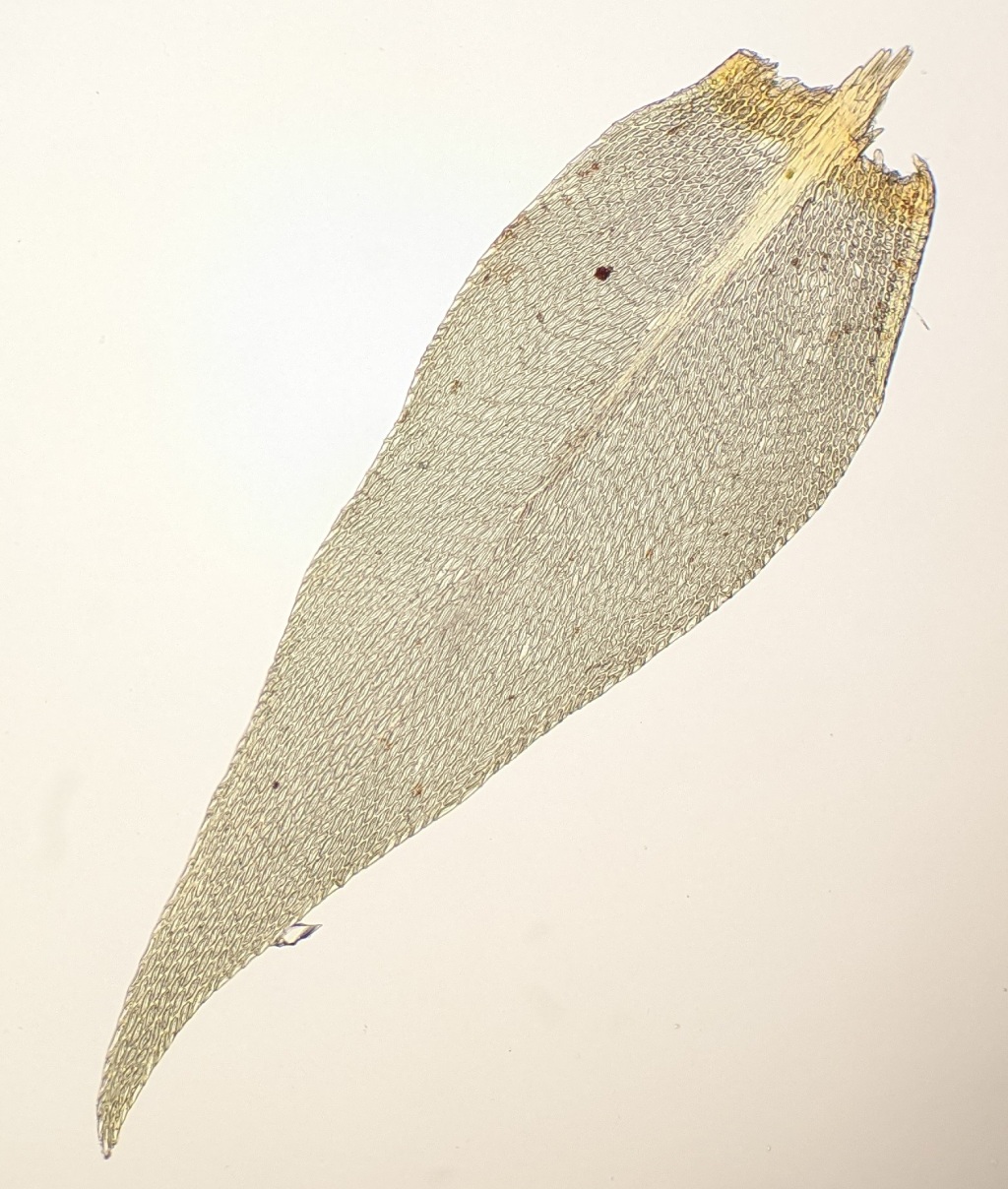Tetraphidopsis pusilla
(Hook.f. & Wilson) DixonDioicous. Asexual reproduction by short and filamentous gemmae aggregated in a conspicuous globose cluster at the end of stems and sometimes also in upper leaf axils. In tufts of 2–4 stems on branches and twigs. Stems 5–40 mm long, simple or sparingly and irregularly branched, orange to red-brown, with occasional red-brown rhizoids near base, arising from a dense cluster of rhizoids, without paraphyllia. Leaves patent when moist, suberect to erecto-patent when dry, widely spaced, narrowly ovate-lanceolate, 1–1.6 mm long, 0.2–0.5 mm wide, slightly concave at base; apices long-acuminate or becoming obtuse toward gemmiferous apices, slightly twisted; costa extending to 1/3 of leaf length; margins entire, recurved, without a border; laminal cells elongate-rhombic, 20–48 μm long, 7.5–10 μm wide, smooth, gradually becoming quadrate to rectangular at very base; alar cells irregularly rectangular, orange, poorly differentiated, 15–28 μm long, 7.5–15 μm wide. Setae 2–3 mm long, orange-brown. Capsules erect, narrowly ellipsoid, symmetric, 1–1.5 mm long. Opercula rostellate from conic base.
OtP, HSF, OtR, Strz. New Zealand. In cool-temperate rainforest and near streams in wet sclerophyll forest in the Otways, Strzelecki Ranges and below the Baw Baw Plateau.
 Spinning
Spinning

